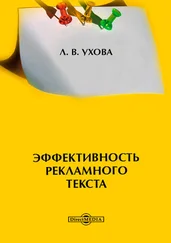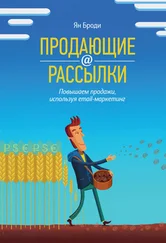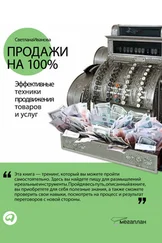54. Farrelly, M. C., Healton, C. G., Davis, K. C. et al. (2002). Getting to the truth: Evaluating national tobacco countermarketing campaigns. American Journal of Public Health 92 (6): 901–907.
55. Rothman, A. J., Martino, S. C., Bedell, B. T. et al. (1999). The systematic influence of gain- and loss-framed messages on interest in and use of different types of health behavior. Personality and Social Psychology Bulletin 25 (11): 1355–1369.
56. Detweiler, J.B., Bedell, B.T., Salovey, P. et al. (1999). Message framing and sunscreen use: Gain-framed messages motivate beach-goers. Health Psychology 18 (2): 189–196.
57. Schneider, T.R., Salovey, P., Pallonen, U. et al. (2001). Visual and auditory message framing effects on tobacco smoking. Journal of AppliedSocial Psychology 31 (4): 667–682.
58. Schneider, T.R., Salovey, P., Apanovitch, A.M. et al. (2001). The effects of message framing and ethnic targeting on mammography use among low-income women. Health Psychology 20 (4): 256–266.
59. Lang, A. (2000). The limited capacity model of mediated message processing. Journal of Communication 50 (1): 46–70.
60. Lang, A., Zhou, S., Schwartz, N. et al. (2000). The effects of edits on arousal, attention, and memory for television messages: When an edit is an edit can an edit be too much? Journal of Broadcasting & Electronic Media 44 (1): 94–109.
61. Stanovich, K. E. and West, R. F. (2000). Individual differences in reasoning: Implications for the rationality debate? Behavioral and Brain Sciences 23 (5): 645–665; discussion 665–726.
62. Kahneman, D. (2011). Thinking, Fast and Slow , 511.New York, NY: Farrar, Straus and Giroux.
63. Benson, B. (2016). Cognitive bias cheat sheet, simplified. Medium . Available from: https://medium.com/thinking-is-hard/4-conundrumsof-intelligence-2ab78d90740f.
64. Crocker, J. and Park, L. E. (2004). The costly pursuit of self-esteem. Psychological Bulletin 130 (3): 392–414.
65. Greenberg, J., Pyszczynski, T., Solomon, S. et al. (1993). Effects of self-esteem on vulnerability-denying defensive distortions: Further evidence of an anxiety-buffering function of self-esteem. Journal of ExperimentalSocial Psychology 29 (3): 229–251.
66. Kunda, Z. (1990). The case for motivated reasoning. Psychological Bulletin 108 (3): 480–498.
67. Haselton, M.G. and Nettle, D. (2006). The paranoid optimist: An integrative evolutionary model of cognitive biases. Personality and Social Psychology Review 10 (1): 47–66.
68. Weinstein, N.D. (1980). Unrealistic optimism about future life events. Journal of Personality and Social Psychology 39 (5): 806–820.
69. Gladwell, M. (2005). Blink: The Power of Thinking Without Thinking , 296. New York, NY: Little, Brown and Company.
70. Ariely, D. (2008). Predictably Irrational: The Hi⇨ en Forces that Shape Our Decisions , 310. New York, NY: HarperCollins.
71. Mundell, E.J., (2014). Scientists erase, then restore memories in rats. HealthDay (2 June).
72. Cory, G.A., (2002). MacLean’s evolutionary neuroscience, the CSN model and Hamilton’s rule: Some developmental clinical, and social policy implications. Brain and Mind 3 (1): 151–181.
73. McLean, P.D. (1989). The Triune Brain in Evolution: Role in Paleocerebral Functions , 718. New York, NY: Plenum Press.
74. Narvaez, D. (2007). Tirune ethics: The neurobiological roots of our multiple moralities. New Ideas in Psychology 26: 95–119.
75. Cory, G.A. (2002). McLeans’s evolutionary neuroscience, the CSNmodel and Hamilton’s rule: Some developmental, clinical and social policyimplications. Brain and Mind 3 (1): 151–181.
76. Freud, S. (1915). The Unconscious. In: General Psychological Theory (ed. P. Rieff), 116–150. New York: Collier Books.
77. Freud, S. (1930). Das Unbehagen in der Kulture [ Civilization and Its Discontents ]. Wien, Austria: Internationaler Psychoanalytischer Verlag.
78. Freud, S. (1922). Beyond the Pleasure Principle . London, Vienna: Intl. Psycho-Analytical.
79. Ayan, S. (2008). Speaking of memory. Scientific American Mind (October/ November): 16–17.
80. Solms, M. (2006). Freud returns. Scientific American Mind 17 (2): 82–88.
81. Dawkins, R. (1976). The Selfish Gene , 368. New York, NY: Oxford University Press.
82. Kahneman, D. and Riis, J. (2005). Living and thinking about it: Two perspectives on life. In: The Science of Well-Being (ed. F.A.H.N. Baylisand B. Keverne), 285–301. Oxford University Press.
83. Schwartz, B. (2004). The Paradox of Choice: Why More is Less , 308.New York: Harper Collins.
84. Iyengar, S.S. and Lepper, M.R. (2000). When choice is demotivating: Can one desire too much of a good thing? Journal of Personality and Social Psychology 79 (6): 995–1006.
85. Katz, J. (1984). The Silent World of Doctor and Patient , 318. Baltimore, MD: John Hopkins University Press.
86. Beard, F.K. (2013). A history of comparative advertising in the United States. Journalism and Communication Monographs 15 (3): 114–216.
87. Singh, M., Balasubramanian, S.K. and Chakraborty, G. (2000). A comparative analysis of three communication formats: Advertising, infomercial, and direct experience. Journal of Advertising 29 (4): 59–75.
88. Lindgaard, G., Fernandes, G., Dudek, C. et al. (2006). Attention web designers: You have 50 milliseconds to make a good first impression! Behaviour & Information Technology 25 (2): 115–126.
89. Geissler, G., Zinkhan, G., and Watson, R.T. (2001). Web home page complexity and communication effectiveness. Journal of the Associationfor Information Systems 2 (1).
90. Tuch, A.N., Bargas-Avila, J.A., Opwis, K. et al. (2009). Visual complexity of websites: Effects on users’ experience, physiology, performance, and memory. International Journal of Human-Computer Studies , 67 (9):703–715.
91. Laham, S.M., Koval, P., and Alter, A.L. (2012). The name-pronunciation effect: Why people like Mr. Smith more than Mr. Colquhoun. Journal of Experimental Social Psychology 48 (3): 752–756.
92. Miele, D.B., Finn, B., and Molden, D.C. (2011). Does easily learned mean easily remembered?: It depends on your beliefs about intelligence. Psychological Science 22 (3): 320–324.
93. Grabner, R.H., Neubauer, A.C., and Stern, E. (2006). Superior performance and neural efficiency: The impact of intelligence and expertise. Brain Research Bulletin , 69 (4): 422–439.
94. Kiesel, A., Kunde,W., Pohl,C. et al. (2009). Playing chess unconsciously. Journal of Experimental Psychology: Learning, Memory, and Cognition , 35 (1): 292–298.
95. Shteingart, H.,Neiman, T., and Loewenstein, Y. (2013). The role of first impression in operant learning. Journal of Experimental Psychology 142 (2):476–488.
96. Atkinson, R.C. and Shiffrin, R.M. (1968). Human memory: A proposal system and its control processes. In: The Psychology of Learning and Motivation: II (ed. K.W. Spence and J.T. Spence), 89–195. London: Academic Press.
97. Miller, G. (1956). The magical number seven, plus-or-minus two: Some limits on our capacity for processing information. Psychological Revie , 101 (2): 343–352.
98. Colavita, F.B. (1974). Human sensory dominance. Perception and Psychophysics 16 (2): 409–412.
99. Li, Y., Liu, M., Zhang,W. et al. (2017). Neurophysiological correlates of visual dominance: A lateralized readiness potential investigation. Frontiersin Psychology 28: 303.
Читать дальше
Конец ознакомительного отрывка
Купить книгу
![Патрик Ренвуазе Код убеждения [Как нейромаркетинг повышает продажи, эффективность рекламных кампаний и конверсию сайта] обложка книги](/books/403244/patrik-renvuaze-kod-ubezhdeniya-kak-nejromarketing-cover.webp)










